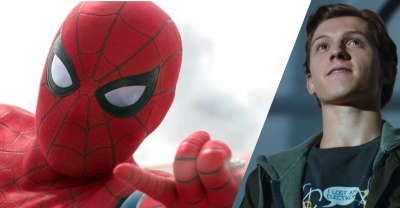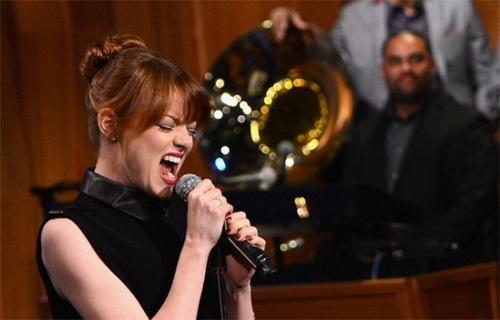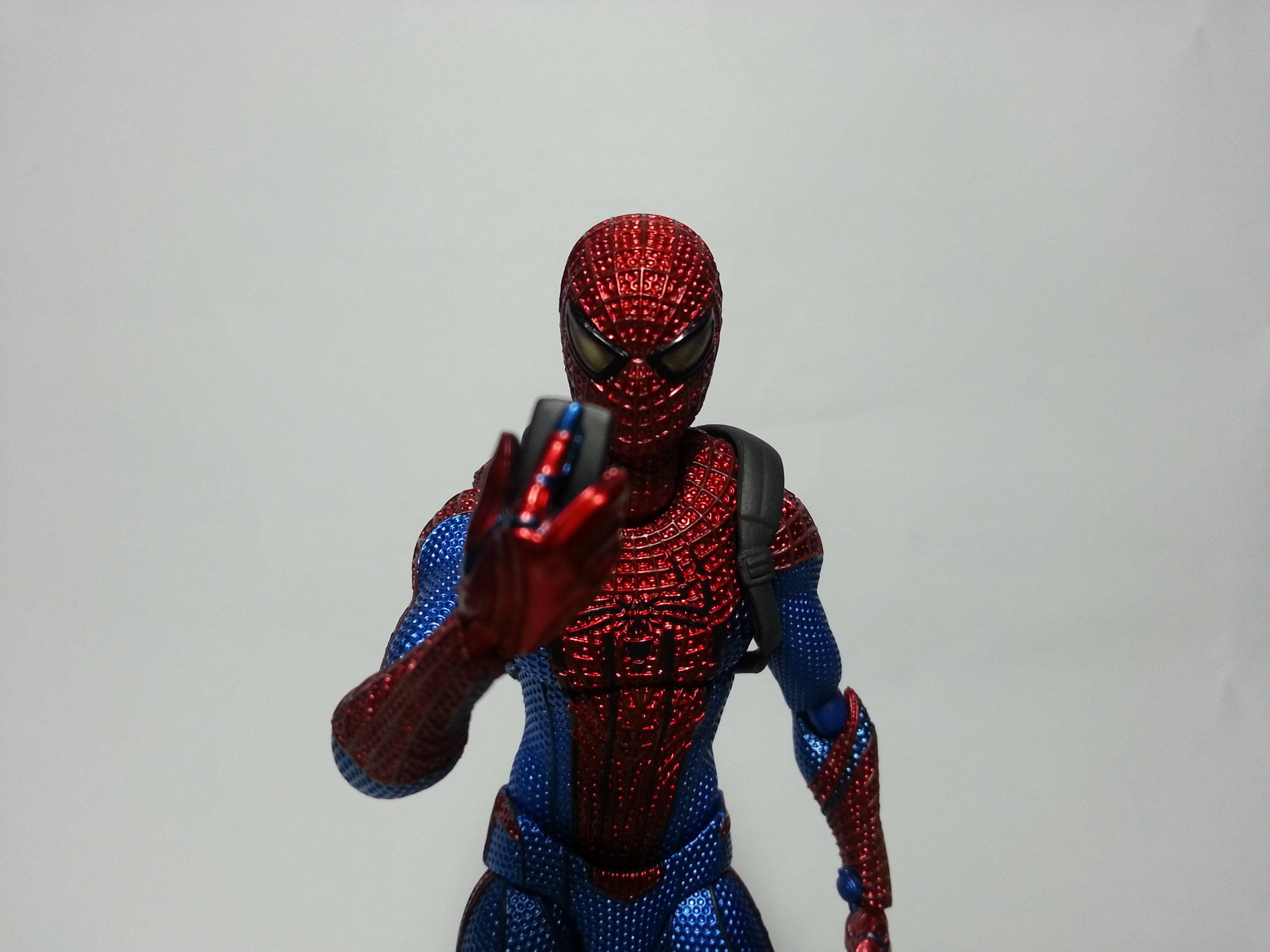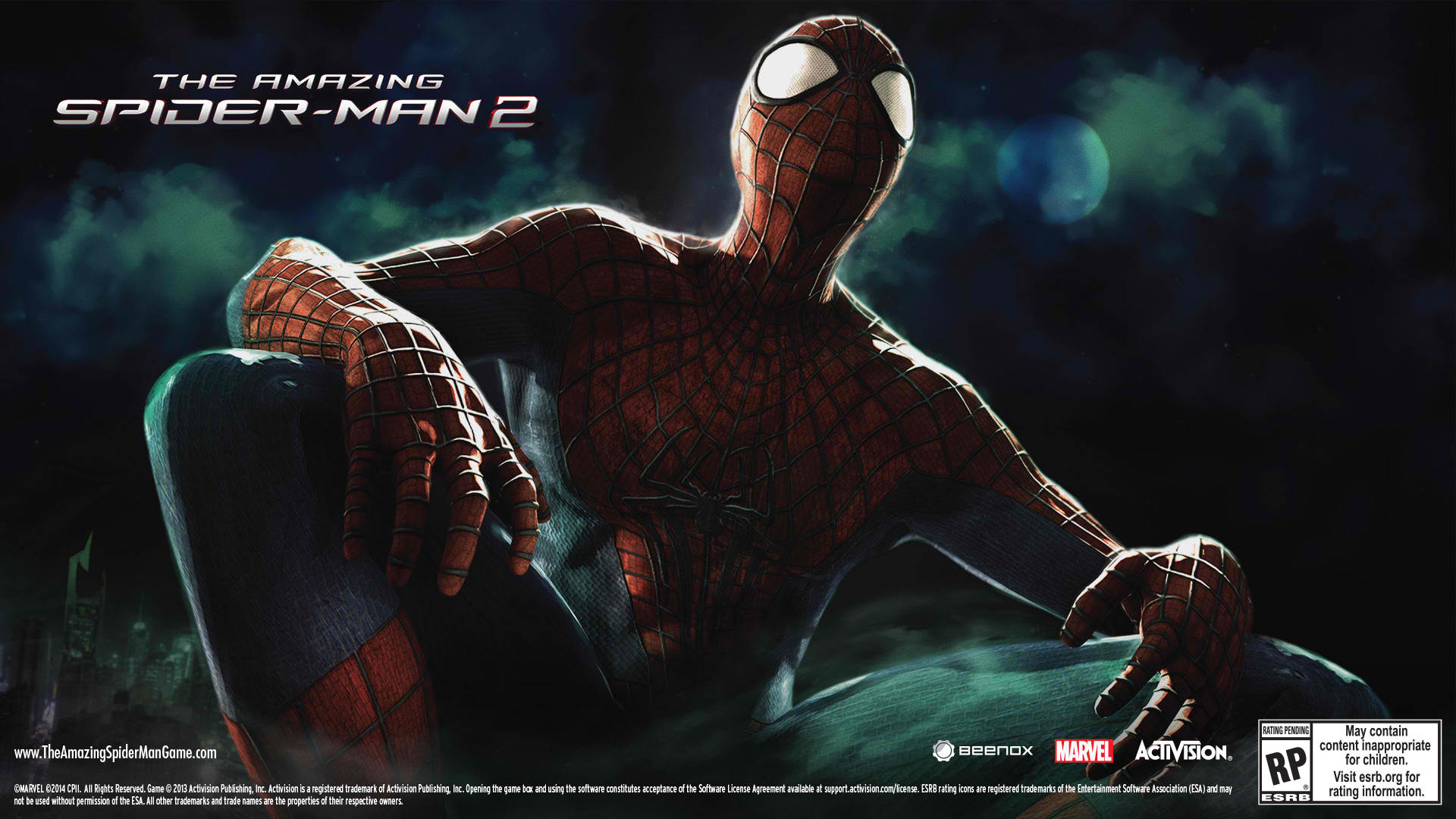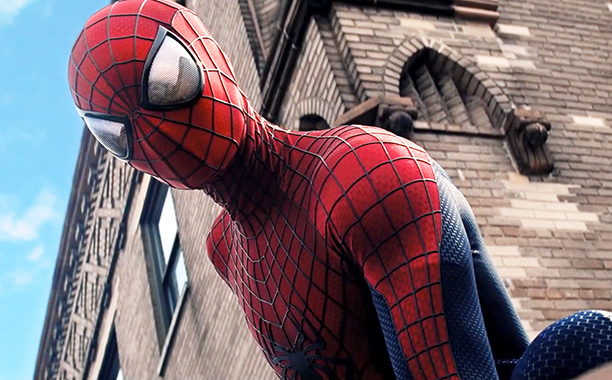Spider-Man Through The Years: In Film and Television
In the Golden Age of comic books where young men are reduced to sidekicks or a supporting role, it was creators Stan Lee and Steve Ditko who has coined the idea of having a teenager to star in a comic book that bears not only the duties and responsibilities a superhero should have but also your average student in High School.
Who is Spider-Man? We all know how the origin goes, a timid nerdy kid got bitten by a radioactive spider and suddenly can do whatever a spider can. But instead of donning a mantle to serve and protect the public, he uses these powers for his own personal gain. It was this choice that would later on affect those closest to him, most notably in an unfortunate night where his Uncle Ben was killed by a robber. An event that he has a hand in for not helping the authorities chase the crook in the first place. It was Uncle Ben’s famous last words “With Great Power, Comes Great Responsibility” that echoed through Peter’s mind and made him decide to use his newfound powers to dedicating his life in crime fighting and do good upon others.
Over the past 5 decades the trials and tribulations of Peter Parker have inspired so many incarnations of the character and the birth of many other characters just like him. But how were they depicted in each portrayal? We are here to find out today in the very first part of “Road to Homecoming!” As the release of the latest Spider-Man film arrives we take a look at the 4 decades of the webslinger’s many incarnations through film and television and how these actors had their own SPIN on it (I’ll stop with the puns I swear).
Note: We will have the 3 animated series for a separate article!
1974 – 1977: Spider-Man’s Super Stories
This is if not the most obscure take on Spider-Man in his history of film and television appearances. His very first live-action debut was not actually a full-fledged adaptation of Spider-Man’s stories as titled but be a “puppet” of sorts. Yes, you read that right! This was actually a recurring 5-minute long skit by PBS’ The Electric Company (home of Sesame Street) where we follow Spider-Man foiling mischievous mus bad guys while teaching kids to do the right thing. Think Mr. T and Sesame Street putting together a superhero lovechild. He never spoke a word or two out loud but mostly communicated through these comic book word bubbles, a change by the creators that encourages kids with their reading skills. This had a few familiar names pop up to be narrators, and the one who stood out was actually Morgan Freeman in the first few episodes.
1977-1979: Nicholas Hammond as The Amazing Spider-Man
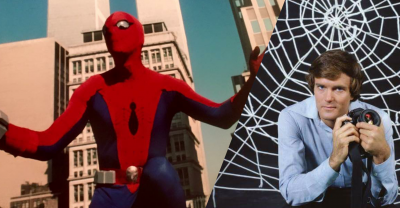 You may have been familiar with him as Freidrich in the classic Sound of Music film, but he was also the first true incarnation of Peter Parker and the Amazing Spider-Man himself. Of course they left the heroics to Stunt Man, Freddy Waugh. This was wwwaaaayyy before the time where they could make us believe that “A Man Can Sling Webs” so the heroics are “bug-sized” and focused more on the man behind the mask. Granted, Peter Parker’s life has always been a soap opera of sorts, so they have a pretty good excuse to approach it in that way. Nicholas Hammond has always wanted audiences to connect more to his vulnerabilities and his moral dilemmas as a superhero and Peter Parker. In an interview with LATimes he reminisced “If you convey three different emotions conflicting with one another — on one hand I want to save the woman who is about to die but on the other hand I don’t want her to find out my secret and at the same time I want to get my pictures back to the newspaper because I don’t want to lose my job — that to me is fun. That to me is acting.” Turmoil like this exists in both Peter Parker and Spider-Man. More so, it was nice that it doesn’t pit him against the likes of giant cartoon monsters (even with the absence of his Rogues Gallery in the entirety of the show) but beating up mustachio drug dealers and corrupted scientists to make the world and stakes seem real despite him being a costumed freak shooting web nets on mid-air. In a way for this incarnation of Spider-Man they were saving a buck but it Spider-Man was very much so alive through this.
You may have been familiar with him as Freidrich in the classic Sound of Music film, but he was also the first true incarnation of Peter Parker and the Amazing Spider-Man himself. Of course they left the heroics to Stunt Man, Freddy Waugh. This was wwwaaaayyy before the time where they could make us believe that “A Man Can Sling Webs” so the heroics are “bug-sized” and focused more on the man behind the mask. Granted, Peter Parker’s life has always been a soap opera of sorts, so they have a pretty good excuse to approach it in that way. Nicholas Hammond has always wanted audiences to connect more to his vulnerabilities and his moral dilemmas as a superhero and Peter Parker. In an interview with LATimes he reminisced “If you convey three different emotions conflicting with one another — on one hand I want to save the woman who is about to die but on the other hand I don’t want her to find out my secret and at the same time I want to get my pictures back to the newspaper because I don’t want to lose my job — that to me is fun. That to me is acting.” Turmoil like this exists in both Peter Parker and Spider-Man. More so, it was nice that it doesn’t pit him against the likes of giant cartoon monsters (even with the absence of his Rogues Gallery in the entirety of the show) but beating up mustachio drug dealers and corrupted scientists to make the world and stakes seem real despite him being a costumed freak shooting web nets on mid-air. In a way for this incarnation of Spider-Man they were saving a buck but it Spider-Man was very much so alive through this.
1977 – 1979: Toei’s Supaidaman
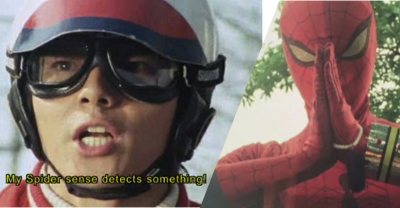 While that was going on, we had another Spider-Man running around only he’s not a science nerd and a photographer named Peter Parker, but a young motorcycle racer named Takuya Yamashiro (played by Shinji Tôdô).
While that was going on, we had another Spider-Man running around only he’s not a science nerd and a photographer named Peter Parker, but a young motorcycle racer named Takuya Yamashiro (played by Shinji Tôdô).
Supaidaman was a joint venture between Toei and Marvel, in a bid for the latter to penetrate the Japanese market. To capture the Japanese viewers’ interests, they had to align Spidey with tropes seen in shows like Kamen Rider; meaning we have the giant monster of the week, a high speed motorbike, random explosions, martial arts, and a giant robot that fights the the said evil giant monster.
This collaboration however did in fact gave birth to many things we know of in the Toei landscape and from most of the tropes mentioned above Leopardon, being his giant robot, is the first of its kind to ever appear in a Tokatsu show. A trope that we would end up seeing even more prominent in the Super Sentai format as it gives birth to Battle Fever J (the first ever Sentai show, with Spider-Man and Miss America fighting alongside them), Denshi Sentai Denjiman and its successor Taiyo Sentai Sun Vulcan. Who would’ve known that through Marvel and Toei’s collaboration, Spider-Man and his giant robot would be THIS big of an impact to shows that people would end up loving now?
2002 – 2007: Tobey Maguire in Raimi’s Spider-Man Trilogy
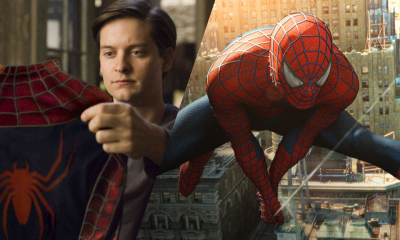 In between the late 80s and the 2000s, A Spider-Man movie has been long talked about (especially when around the time we finally have the technology for a much more sophisticated spectacle film) before Raimi took the reigns a decade or two later. It was however, caught on a spiral with one studio having the desire to develop such only to lose the rights later on when studio politics and a lot of departures got in the way (even James Cameron had a hand in the film’s earlier developments). It was really Sony Pictures and Evil Dead director Sam Raimi’s partnership that brought the first ever big screen version of our favorite wall-crawler.
In between the late 80s and the 2000s, A Spider-Man movie has been long talked about (especially when around the time we finally have the technology for a much more sophisticated spectacle film) before Raimi took the reigns a decade or two later. It was however, caught on a spiral with one studio having the desire to develop such only to lose the rights later on when studio politics and a lot of departures got in the way (even James Cameron had a hand in the film’s earlier developments). It was really Sony Pictures and Evil Dead director Sam Raimi’s partnership that brought the first ever big screen version of our favorite wall-crawler.
For a lot of us, Tobey Maguire was THE Spider-Man when the film came out in 2002. Raimi crafted the film as a contemporary approach to how Peter Parker was 4 decades before in the comic books; injecting the campy yet fun nature of Spidey’s rogues gallery and supporting cast along with New York City but also grounding these silly characters with real stakes and character drama. Throughout the entire trilogy, Raimi pits Spider-Man by raising a serious challenge through Maguire’s Peter Parker and it is him balancing his duties as a lone superhero above the duties of him as a son to his Aunt May and Uncle Ben, a student, and a lover. Asking whether or not one is compatible of the other.
Through these we see Tobey flesh out the character in a certain way wherein he was tested mentally to the point of giving up being a superhero but tested physically as well as he fights terrifying feats against the likes of Venom, Green Goblin, Doc Ock, and even the times he had to make the choice of rescuing people or let the bad guy get away again. We’ve seen him find strength in his friends and family, We’ve seen him be profoundly happy and profoundly sad, We’ve see him realize his duties and responsibilities through reason on the use of his powers. He experiences the conflicts of virtue and vice in the context of his abilities and at great cost to himself and the people he cares about. Maguire through Raimi’s direction has depicted the hero’s journey in a way where the machismo hero could always have times to be conflicted, imperfect, emotional and above all vulnerable. Although the ending of the third film was rather vague, we could say that all these ideas (despite the last film being so convoluted) has a sense of closure between these story elements to our main hero.
2012 – 2014: Andrew Garfield in Webb’s Spider-Man Duology
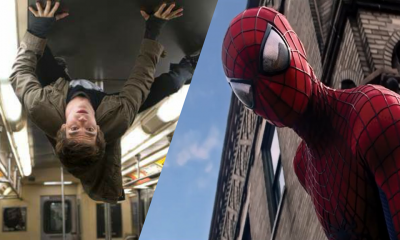 With Raimi and team’s departure and the possibility of a fourth Spider-Man film ever getting made is vague, Sony had a contingency plan to develop a premature reboot instead. With Marc Webb of (500) Days of Summer fame at the helm and a yet to be big star named Andrew Garfield to be the new face of Spider-Man/Peter Parker.
With Raimi and team’s departure and the possibility of a fourth Spider-Man film ever getting made is vague, Sony had a contingency plan to develop a premature reboot instead. With Marc Webb of (500) Days of Summer fame at the helm and a yet to be big star named Andrew Garfield to be the new face of Spider-Man/Peter Parker.
To make it all different they went for a much darker and an even more realistic take on the character ala Christopher Nolan’s The Dark Knight Trilogy. As it re-tells the origin story with a new twist of his parent’s mysterious disappearance and… That’s it? Oh! and they also tried to set-up their own cinematic Spider-Man universe too… That ended up making every film feel so convolu–
*ahem* Anyway! In these films, they takes notes to the Raimi films by showing more of the man behind the mask than the superheroics. With Garfield being more of the Peter Parker who lived in our time (where skateboards are still cool?). Some unique nuances that are of note were that this had explored what the Raimi films have missed out on and it is the character’s trademark rapid fire sarcasm and confidence. Humor has always been one of Spider-Man’s greatest weapon to distract and/or cripple his foes but also one way of the ordinary Peter Parker to cope with the extraordinary feats he is facing. What was also missing from the Raimi films and it was the relationships between him and his indispensable supporting cast that Peter protects and fight strength to fight for as he sacrifices himself to fight crime everyday.
What we do have among the cast is the kick-ass nerd who won’t take “no” for an answer, a superhero on her own, Peter Parker’s first and true love, Gwen Stacy. Stone and Garfield had a genuine, believable, and a cute dynamic that pulls through both of the films’ slowburn parts and where director Marc Webb truly shines despite with his inexperience in the superhero genre. Granted, Webb does leave room for Garfield to weave other character dynamics with Spider-Man’s supporting cast like George Stacy (for a little while), Harry Osborn, Curt Connors, Aunt May, and Uncle Ben (for a little while). There really isn’t much else to say since this is basically a modern-2010s take on Peter Parker/Spider-Man (with webshooters) and that his struggles are still more of the same; there is still some angst to be had, but although Peter can be a whiny dude he still picks himself up and does the right thing eventually.
2016 – Present: Tom Holland – The Marvel Cinematic Universe’s Spider-Man!
With the Amazing franchise in a limbo, Sony Pictures having troubles internally, A deal between Marvel and Sony was made and we finally have the a Spider-Man that truly feels like he’s right at home (even if he was just shown in a segment of Captain America: Civil War for not very long). Combining the levity and groundedness of the Raimi Films and the realism of Webb’s films, the newest venture of Spider-Man is an all around fresher take on the character but a more familiar one to long time fans of the character.
Spider-Man: Homecoming is no origin story, Spider-Man is an established hero in the larger Marvel Cinematic Universe but certain elements of his life under the mask and struggles aren’t as glossed over like the previous adaptations. Tom Holland portrays his Peter Parker differently in a way by being inexperienced, optimistic, and even more unsure. We see him be a fanboy and have his own problems like popularity in High School, constantly proving himself to be at par with other superheroes, finding love, catching up with class, balancing responsibilities whether it is at school, at home, or in the streets of Queens he has sworn to defend. This is a Peter Parker who really is a functioning teenager in High School and not some dude in his late 20s pretending to be a student. And he has a larger supporting cast of teenagers and a well fleshed out villain too. This is a Peter Parker who is in search for direction, It’s an honest take of how one doesn’t enjoy the mundane life that he lives in as his alter ego and the story cannot let him move forward to being the superhero that he wanted to be unless he realizes to figure out who he truly is as the man behind the mask.
Although we have these gods, monsters, and super beings of the Marvel universe where they tower above everyone else and deals with larger stakes. Spider-Man is a hero of the everyman and clings close to the ground as the friendly neighborhood’s greatest Avenger.

